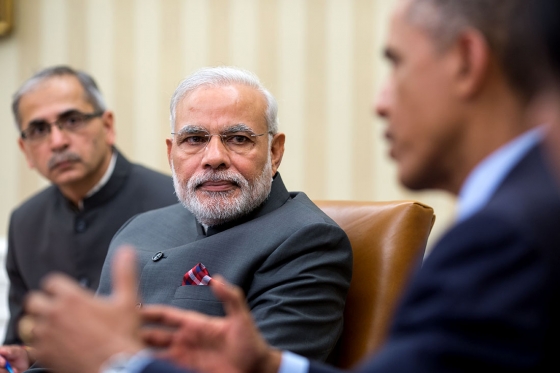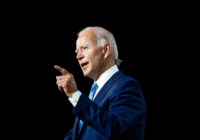Obama must realize that the Mumbai attacks were the tipping point in India’s battle against terrorism.
US President Barack Obama’s visit to India to attend the Republic Day celebrations is a sign of stronger ties between the two nations. Obama and Indian Prime Minister Narendra Modi have broken new grounds after the latter entered office in 2014. They have rapidly moved from former Prime Minister Atal Bihari Vajpayee’s assertion of India and the United States being “natural allies” to Modi’s description of the two countries as “natural global partners.” The positive chemistry between the two leaders is epitomized by the fact that Obama is the first US president to attend the Republic Day celebrations.
US-India relations saw a downturn after the heydays of the India-US Civil Nuclear Energy Agreement of 2005. The deal was a personal achievement for then-Prime Minister Manmohan Singh, who virtually staked the survival of his government while signing the agreement. But relations between the US and India became comatose as Singh’s government entered a self-preservation phase during its second term.
Ties between both nations reached an abyss in 2013, when Indian diplomat Devyani Khobragade was detained in the US for alleged perjury. Soon after, Indo-US relations turned frosty following a public outcry over Khobragade’s humiliation.
Prime Minister Modi’s emphasis on economic recovery has ensured that he has astutely realized the importance of US support. The affluent Indian diaspora in the United States is also on Modi’s radar for an inflow of foreign funds and influencing American policy, making for a favorable outlook toward Indian economic resuscitation. The US has also belatedly realized the opportunities at hand in the Indian economy, which would speed up the revival of its own economic situation.
During his trip, Obama is expected to renew the Defense Framework Agreement, which was initially signed during Singh’s visit to the US in 2005. The Defense Technology and Trade Initiative for joint development and production of defense equipment is also expected to yield preliminary results during Obama’s visit. The US has gradually replaced Russia as India’s largest arms supplier, providing $1.9 billion-worth of defense equipment in 2013. It is expected that the optimism generated by the US president’s trip will gradually reduce irritants like the stalemate over the Nuclear Liability Act.
Good Taliban, Bad Taliban
However, despite the positivity generated between the two countries, the biggest challenge that confronts Obama and the US in Indian eyes is a negative perception. New Delhi views the US mollycoddling of Pakistan — ignoring Islamabad’s involvement in state-sponsored terrorism — as an embodiment of American hypocrisy in its “War on Terror.” Obama seems to have grasped this negative perception and has, therefore, kept Pakistan out of his itinerary, indicating that Washington is finally initiating measures to alleviate Indian feelings. But Indian perception demands more proactivity and less tokenism by the US role in reining in the Pakistani government and its rogue Inter-Services Intelligence (ISI) from fomenting terrorism in India.
The Pakistani government has consistently denied involvement in acts of terrorism against India. But its assertion that “non-state actors” are involved in threats to India’s security no longer cuts the ice with the Indian establishment.
The façade of non-state actors started in 1948 when, immediately after the partition of India, Pakistani army personnel infiltrated as tribesmen to annex Kashmir. The move failed due to the timely accession of Kashmir with India, which allowed the government to send in armed forces. The Pakistani effort to send in regular soldiers to instigate a revolt in Kashmir in 1965 fell flat due to a lack of support from the local population. Operation Gibraltar, the code name for this anticipated uprising, ran aground even before it could begin.
Gen. Muhammad Zia-ul-Haq, after usurping power in Pakistan in 1977, realized the folly of open military confrontation with India. He changed track and initiated the policy of “bleeding India through a thousand cuts” by promoting terrorists who conducted a Pakistani proxy war on Indian soil. Separatist movements in Punjab and Kashmir were liberally financed and armed through the ISI to compel India to divert its resources in order to counter the menace of terrorism.
Pakistan now bears the fruits of Zia-ul-Haq’s policy of Islamization of the Pakistani army. Gen. Pervez Musharraf’s attempt to infiltrate regular Pakistani soldiers in the garb of terrorists into Kargil in 1999 nearly led to an armed confrontation between Pakistan and India.
Pakistani Prime Minister Nawaz Sharif’s statement regarding “no differentiation between the good Taliban and bad Taliban,” following an attack on school children in Peshawar in December 2014, was an admission of Pakistan’s culpability in encouraging the “good Taliban” who have attacked civilian targets in India and Afghanistan. The insincerity behind the statement is evident from the fact that the “good” Taliban in India’s case, Hafeez Saeed, continues to roam free in Pakistan under ISI’s protection. Saeed, who carries a bounty of $10 million for his role in the Mumbai attacks of 2008, has been let off by the Pakistani courts due to a “lack of evidence.” He is consistently referred to as a social activist by multiple Pakistani spokespersons.
Lashkar-e-Taiba (LeT), a terrorist organization established by Saeed with the motive of converting India into an Islamic caliphate, moves around freely in Lahore and is patronized by ISI. Saeed’s audacity is evident from the fact that he plans to lead a “million march” in Karachi under the banner of Jamaat-ud-Dawa, the political arm of LeT, on the day Obama lands in New Delhi. The march is apparently to protest the publication of cartoons by French satirical magazine Charlie Hebdo, which is infamous for its depictions of Prophet Muhammad. But the real reason behind the gathering is to spew venom on India and recruit more foot soldiers for the group’s jihad against New Delhi.
Obama must realize that the Mumbai attacks were the tipping point in India’s battle against terrorism. Pakistan’s refusal to hand over the key conspirators — Saeed and Zaki-ur-Rehman Lakhvi — to India for trial has become a festering wound for the Indian psyche. The flippancy with which Pakistan conducted trials in the aftermath of the attacks has exposed its hypocrisy in the fight against terrorism.
The US needs to understand that Pakistan is gradually positioning itself as the South Asian flag bearer of Wahhabism. Notwithstanding the repercussions such a situation would have on Pakistani society, but India is supposed to be the laboratory to test this Wahhabi ideology.As Pakistan’s non-conventional fighting arm, LeT provides the country with the strategic depth in its jihad against India. LeT is slowly transforming into the most dreaded terrorist outfit in the Indian sub-continent. Bruce Riedel, in his paper for the Brookings Institution, has predicted that “anotherLeT attack on India is probably only a matter of time.”
President Obama needs to realize that India has run out of patience with ISI and its terror proxies. Another attack on the scale of 26/11 could have serious repercussions for security in South Asia. Public fury, combined with Modi’s image as an assertive leader, could force his hand if India’s security is breached once again. While Obama’s talks with Modi might focus on crisis management in the event of a future terrorist attack, India would be keen to decipher any signs he reveals over his message to the Pakistani government. Obama needs to utilize the opportunity to compel Islamabad and ISI to desist from its support for the “good Taliban.”
Fair Observer is a nonprofit organization dedicated to informing and educating global citizens about the critical issues of our time. Please donate to keep us going.
The views expressed in this article are the author’s own and do not necessarily reflect Fair Observer’s editorial policy.
Photo Credit: Mykhaylo Palinchak / Shutterstock.com / The White House / Flickr
1 comment
Leave a comment
You must be logged in to post a comment.
Support Fair Observer
We rely on your support for our independence, diversity and quality.
For more than 10 years, Fair Observer has been free, fair and independent. No billionaire owns us, no advertisers control us. We are a reader-supported nonprofit. Unlike many other publications, we keep our content free for readers regardless of where they live or whether they can afford to pay. We have no paywalls and no ads.
In the post-truth era of fake news, echo chambers and filter bubbles, we publish a plurality of perspectives from around the world. Anyone can publish with us, but everyone goes through a rigorous editorial process. So, you get fact-checked, well-reasoned content instead of noise.
We publish 2,500+ voices from 90+ countries. We also conduct education and training programs
on subjects ranging from digital media and journalism to writing and critical thinking. This
doesn’t come cheap. Servers, editors, trainers and web developers cost
money.
Please consider supporting us on a regular basis as a recurring donor or a
sustaining member.
Will you support FO’s journalism?
We rely on your support for our independence, diversity and quality.








Tushar Jain
January 26, 2015
Very good article sir.